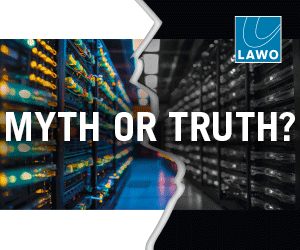In recent months, Twitter has been pushing further into sport with strategic MENA partnerships that have ramped up engagement on the platform. Kinda Ibrahim, Director of Media Partnerships, MENA, talks to BroadcastPro ME about the platforms recent sports partnerships and the strategy behind its increasing popularity among MENA users. You have undertaken a number of […]

In recent months, Twitter has been pushing further into sport with strategic MENA partnerships that have ramped up engagement on the platform. Kinda Ibrahim, Director of Media Partnerships, MENA, talks to BroadcastPro ME about the platforms recent sports partnerships and the strategy behind its increasing popularity among MENA users.
You have undertaken a number of local sports initiatives of late, the most recent being the AFC Asian Cup in the UAE with Goal. What is driving your sports strategy on Twitter?
We have been continuously monitoring how our audience interacts and engages with sports content and found a lot of activity on our platform. We partnered with Kantar Media for research to further understand Twitters role within sport in Saudi Arabia.
They released a study early last year which showed that sports has emerged as a key genre of content on Twitter, with 60% of the respondents saying that they are very interested in following football content. The respondents like to keep up-to-date with live scores and updates during a football match, and they tune in to Twitter during a match to watch or listen to exclusive content about football during the games.
So during the World Cup, we launched a live show called #YallaGoal with Goal and the show generated an average of 400,000 viewers per episode. Based on that success, we began to explore other sports opportunities.
We started doing a weekly show that covers the big five European football leagues with Goal in November. More recently, we launched the AFC Asian Cup series with Goal and this was sponsored by Dubai Tourism. This is ongoing with live video clips, and each of these video clips has been generating an average of one million views.
Your partners are not necessarily the rights holders to these sports events, are they? So how exactly are you running a complementary or parallel show that engages viewers?
Sometimes we partner with rights holders, and sometimes we dont.
For instance, sports media company Perform Group (of which Goal is a part) doesnt own the rights but brings a lot of external expertise in terms of the data it owns and the repertoire of sports experts and analysts who host its shows and talk about the top moments in a match. Our users are looking for that kind of overview, reviews and expert analysis.
We also work with rights owners. We have partnered with beIN Sports on some of their sports content, and they are the official rights holder for a lot of sports events. If you follow their account on Twitter, you will get all the highlights of the Asian Cup. They are basically tweeting all the top near-live highlights of the tournament.
The Kantar Media study that we conducted also revealed that peoples top priority on Twitter is to access live streaming content, so we have tried to work on bringing more of these to our platform.
We recently partnered with Saudi Arabias General Sports Authority, the rights owner of Supercoppa Italiana (the Italian Super Cup), to live stream it in Saudi Arabia. That generated 172,000 viewers. In parallel, we had three sponsors for content around the tournament, such as behind-the-scenes videos and clips about the players, which created a lot of engagement.
We also partnered with the General Sports Authority to live stream the Superclásico Championship that took place in Riyadh and Jeddah in October, and that generated almost 300,000 viewers.
How did the AFC Asian Cup unfold on Twitter?
We started prior to the show. As far back as December, we started with pre-tournament episodes about Dubai, because the show is sponsored by Dubai Tourism. Now, during the tournament, we are really focused on where the most important fixtures are happening. For instance, if Saudi Arabia is playing or the UAE is playing, this will be our focus.
There were 2.5 million tweets sent about the Asian Cup during the group stage and the most mentioned teams were Saudi Arabia followed by India, Japan, Thailand and then Iraq.
We have seen some peak numbers during key moments like as soon as the India-Thailand and the Saudi Arabia-North Korea games finished, there was a huge spike in conversation. This indicates that when fans follow people on Twitter, the engagement is all in real time.
Our strategy is to work with premium content partners in a complementary role. This has helped us build long-term partnerships with publishers. Globally, our partners are seeing a 60% year-over-year increase in revenue coming from Twitter.
How is their revenue generated from Twitter?
Publishers revenue comes through in-stream video sponsorship and in-stream video ads. We worked with beIN Sports at the end of last year around the distribution of official UCL premium content. They were not live but near-live clips, sponsored by Apple. We had something similar for the World Cup, and we have ongoing sponsorships that help publishers get additional distribution and revenue for their content.
When advertisers ran six-second pre-roll campaigns around match highlights from beIN for the UCL and the World Cup, they saw a 75-85% completion rate. This means viewers were seeing most of the sponsored video clips. It’s a high metric and shows that the audience is engaged.
Publishers get an incremental reach through paid media by brands. They get revenue from these brands through us. It is a revenue-sharing model.
Which specific game has worked mostly on Twitter, and who is your regional audience?
In MENA, it is football and more football. There is also WWE, offering sports and entertainment. Our audience is primarily Arabic-speaking in this region. For the US, golf and NBA content have typically had a lot of viewers.
How do audiences engage differently on Twitter? Do you see a different profile?
I guess its the conversation around a game or news that drives the engagement. Audiences on Twitter are not unique to Twitter because of who they are, but because of how they behave differently on this platform. They come here to see conversations and engage with people who share similar interests; they dont passively scroll through timelines to see news about their friends and family. They behave differently and are likely to discover more content on Twitter. They are more likely to remember a partner story or content here, because they come with a discovery mindset, as they behave differently and because they are engaged.
How does that help brands and your partners?
Our partners generally come to extend their audience reach and generate incremental revenue, because it enables them to diversify their business and share their content with new audiences in new markets. Basically, you have a young, connected, mobile-first audience here on Twitter. This is why we believe Twitter connects partners with the most valuable audiences at times when theyre the most receptive.










































































